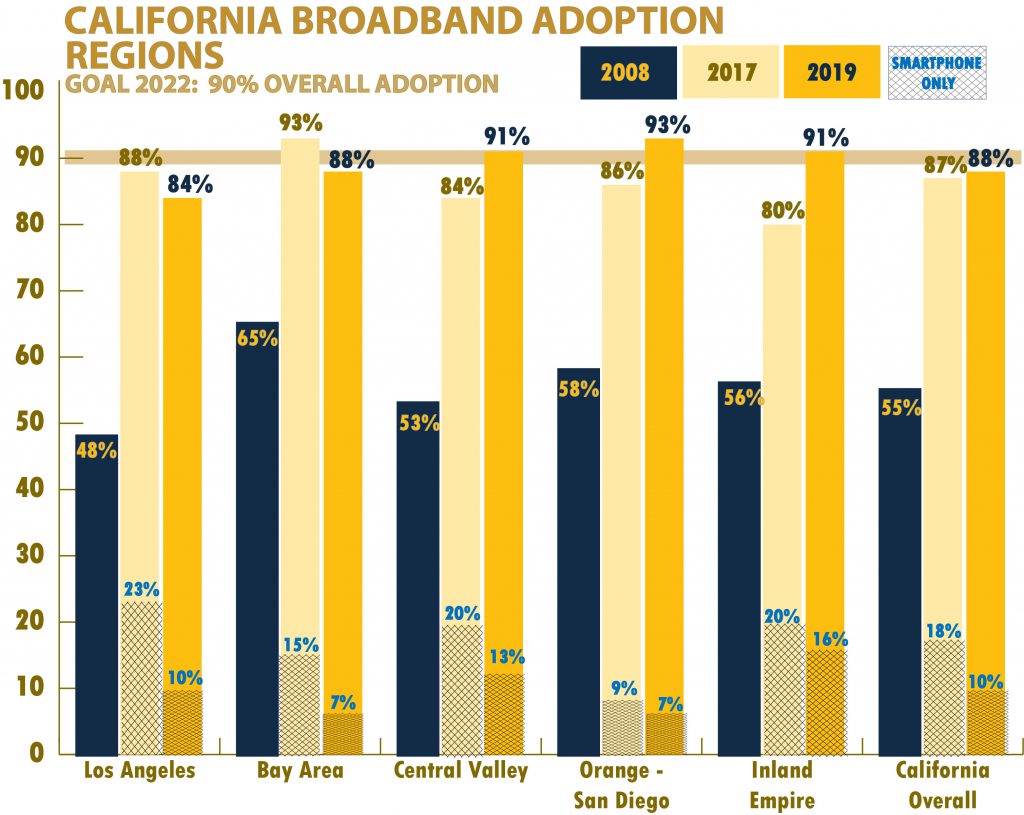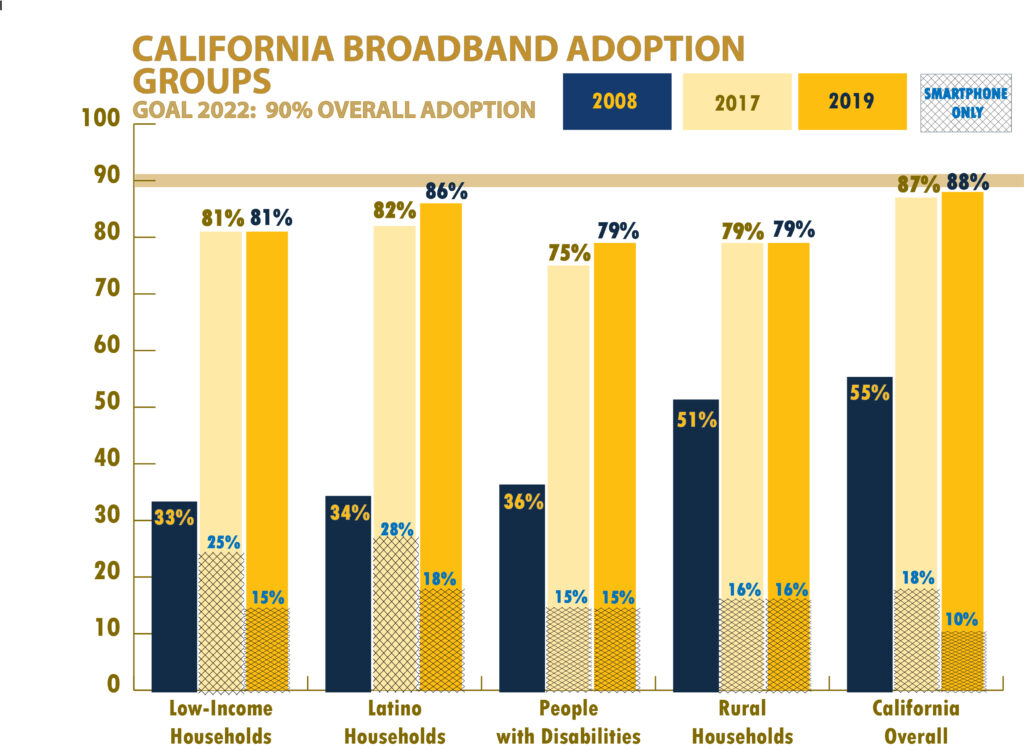Internet Connectivity and the “Digital Divide” in California Households is a summary report of the CETF 2019 Annual survey that tracks the progress of broadband deployment and adoption throughout California. The Annual Survey 2019 finds 88% of the state’s households have high-speed Internet access at home through either a computing device or a smartphone, but 12% or one in eight homes still do not have access. Among the 88% with a home high-speed Internet connection (referred to generically as “broadband”), the proportion of Californians connecting to the Internet through a home computing device – defined as a desktop, laptop or tablet computer – has increased from 69% to 78%. At the same time, households with only a smartphone to access the Internet have declined, from 18% to 10%. This is a positive development given that households with only smartphone access are considered “underconnected” because they are at a disadvantage in optimizing use of the technology for certain functions, such as doing schoolwork, applying for a job, or taking online classes to expand workforce skills.
California households without an Internet connection cite cost of broadband service or lack of a device. Cost is by far the single biggest factor preventing those without Internet connectivity at home from going online. Three in four (73%) without access to the Internet are not aware that they may be eligible for discounted home Internet service for as low as $10-$15 a month. This finding underscores the need for Internet Service Providers (ISPs) to do more advertising to reach eligible households, especially by placing ads with community media. For more information about programs and eligibility, please visit Internet For All Now!
According to the Annual Survey, several California demographic groups fall more than 10 percentage points below the 88% overall adoption rate:
- Households earning less than $20,000 (70%)
- Adults 65 or older (76%)
- Not a high school graduate (74%)
While other 2019 demographic groups are now within 10 points of overall adoption:
- Spanish-speaking Latinos (80%)
- Adults who identify having a disability (79%)
“The 2019 Statewide Survey clearly shows that strategically-focused, proactive efforts by the State, schools, cities, counties and community organizations to promote Digital Inclusion are working,” said Sunne Wright McPeak, President and CEO of CETF. “However, too many low-income students still aren’t provided a computing device or allowed to take their school computers home nor are their parents provided digital literacy training—situations that must change if we are going to successfully close the Digital Divide in California.” She commended the California Department of Education and Former Superintendent of Public Instruction Tom Torlakson for urging school districts to inform parents about affordable Internet offers. She added, “Policymakers should recognize how home Internet connectivity is critical for the State to achieve its environmental goals—broadband is a green strategy.”
The CETF Annual Survey this year in collaboration with the 2019 UC Berkeley Institute of Governmental Studies (IGS) Poll, has been conducted since 2008. Please also see: the CETF Press Release; the UC Berkeley Institute of Governmental Studies Poll Press Release issued on March 12, 2019; and the 2019 Annual Survey Tabulations.
About the California Emerging Technology Fund. The mission of CETF is to close the Digital Divide in California. The overall goal is to reach 98% of all California residences in every region with broadband infrastructure and to achieve 90% home broadband adoption by 2023. CETF is technology-neutral: “broadband” is a generic term for high-speed Internet access—wireline and wireless Internet service is faster than a dial-up connection. CETF strives to achieve these goals through public awareness and education, grantmaking to community organizations, and advancing public policy.




